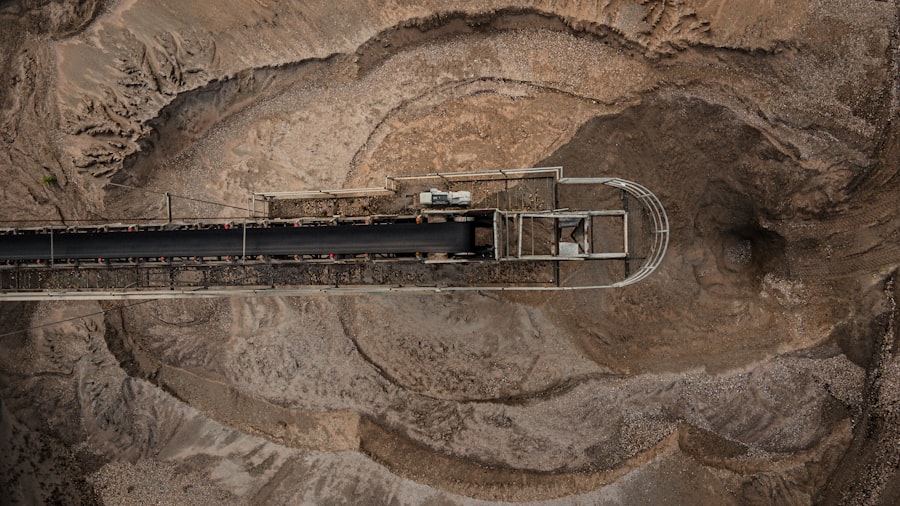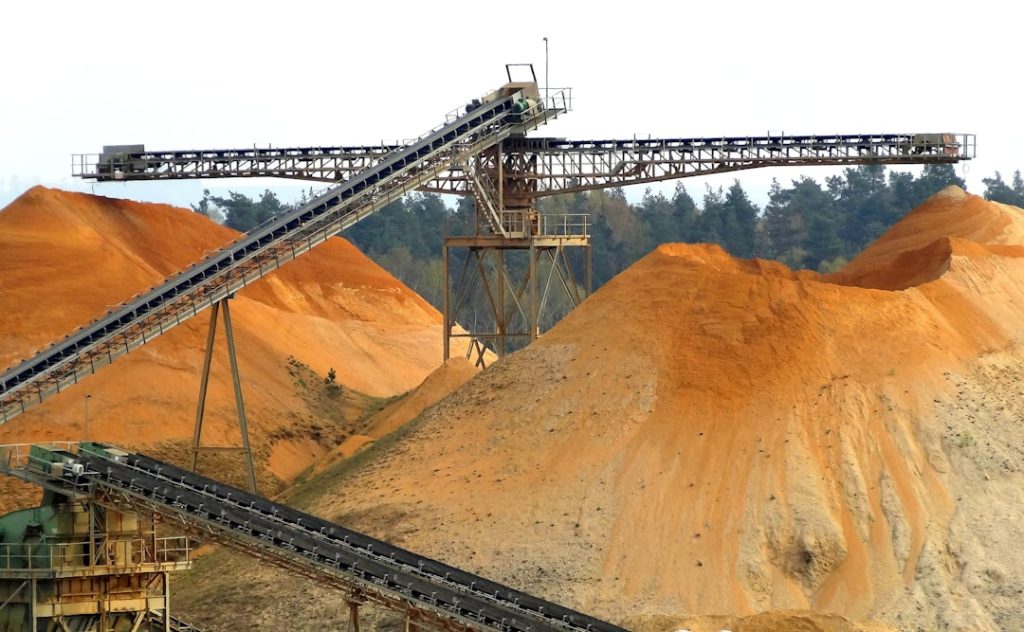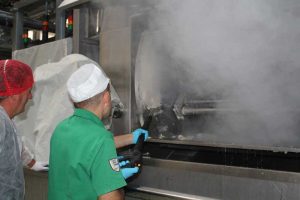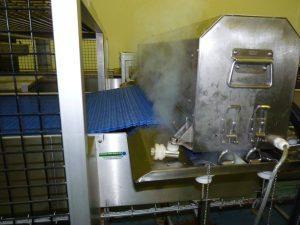One of the most effective methods for conveyor cleaning is the use of vacuum systems. These systems work by creating suction to remove dirt, debris, and other contaminants from the conveyor belt and surrounding areas. The benefits of using vacuum systems for conveyor cleaning are numerous. Firstly, they improve efficiency by quickly and effectively removing dirt and debris, preventing build-up that can lead to equipment malfunctions or breakdowns. This reduces downtime and increases productivity.
Secondly, vacuum systems offer increased safety for workers. By removing debris from the conveyor system, the risk of slips, trips, and falls is significantly reduced. Additionally, vacuum systems can remove hazardous materials such as chemicals or sharp objects that may pose a danger to workers if left on the conveyor belt.
The Benefits of Steam Vapour Cleaning Machines for Conveyor Cleaning
In addition to vacuum systems, steam vapour cleaning machines are another effective method for conveyor cleaning. These machines use high-temperature steam to dissolve dirt and grime, making it easier to remove. The benefits of using steam vapour cleaning machines are manifold.
Firstly, steam vapour cleaning machines are highly effective at removing stubborn dirt and grime that may be resistant to other cleaning methods. The high temperature of the steam helps to break down grease and oil, making it easier to remove from the conveyor belt.
Secondly, steam vapour cleaning machines use minimal water compared to traditional cleaning methods. This not only reduces water usage but also decreases drying time, allowing for faster turnaround and increased productivity.
Lastly, steam vapour cleaning machines provide improved sanitation. The high temperature of the steam kills bacteria and other pathogens, ensuring a clean and hygienic conveyor system.
How a Vacuum System Works in Conveyor Cleaning
A vacuum system for conveyor cleaning consists of several components that work together to remove dirt and debris from the conveyor belt. The main components of a vacuum system include a suction head, a collection tank, a filtration system, and a power source.
The suction head is the part of the system that comes into contact with the conveyor belt and creates suction to remove dirt and debris. It is typically equipped with brushes or nozzles to agitate and loosen the contaminants for easier removal.
The collected dirt and debris are then transported to a collection tank, where they are stored until they can be properly disposed of. The collection tank may have filters or separators to separate larger particles from the air before it is released back into the environment.
The filtration system is responsible for removing fine particles from the air before it is released back into the environment. This ensures that the vacuum system operates efficiently and does not contribute to air pollution.
The Importance of Regular Conveyor Cleaning for Optimal Performance
| Component | Function |
|---|---|
| Vacuum Pump | Creates suction to remove debris and dust from conveyor belt |
| Vacuum Hose | Transfers suction power from pump to cleaning head |
| Cleaning Head | Attaches to vacuum hose and uses suction to remove debris from conveyor belt |
| Filter | Traps debris and dust before it reaches the vacuum pump |
| Control Panel | Allows operator to turn vacuum system on/off and adjust suction power |
Regular conveyor cleaning is essential for maintaining optimal performance and reducing maintenance costs. When dirt and debris accumulate on the conveyor belt, it can cause friction and wear, leading to increased energy consumption and decreased operational efficiency. Additionally, build-up on the conveyor belt can result in misalignment or slippage, which can cause equipment failure or breakdowns.
Neglecting conveyor cleaning can also pose safety hazards. Accumulated debris can create tripping hazards for workers, increasing the risk of accidents and injuries. Furthermore, if hazardous materials are present on the conveyor belt, they can pose health risks to workers if not properly removed.
Therefore, implementing a regular conveyor cleaning schedule is crucial for ensuring the longevity and efficiency of the system, as well as the safety of workers.
The Role of Automatic Conveyor Belt Steam Vacuum in Conveyor Cleaning
Automatic conveyor belt steam vacuum systems offer several advantages over manual cleaning methods. These systems combine the power of steam vapour cleaning machines with the efficiency of vacuum systems to provide a comprehensive and automated cleaning solution.
Automatic conveyor belt steam vacuum systems work by using high-temperature steam to dissolve dirt and grime on the conveyor belt. The steam is then immediately vacuumed up, along with the dissolved contaminants, into a collection tank. This eliminates the need for manual scrubbing or wiping, saving time and effort.
There are different types of automatic conveyor belt steam vacuum systems available, each with its own features and benefits. Some systems are designed for continuous cleaning, allowing for uninterrupted operation of the conveyor system. Others are designed for periodic cleaning, providing a deep clean when needed.
The Different Types of Conveyor Cleaning Systems Available in the Market

When choosing a conveyor cleaning system, there are several options available in the market. These include manual cleaning methods, vacuum systems, and steam vapour cleaning machines.
Manual cleaning methods involve physically scrubbing or wiping the conveyor belt to remove dirt and debris. While this method may be suitable for smaller facilities or less demanding applications, it is time-consuming and labor-intensive.
Vacuum systems, as discussed earlier, use suction to remove dirt and debris from the conveyor belt. These systems are efficient and effective at removing loose particles but may not be as effective at removing stubborn dirt or grime.
Steam vapour cleaning machines use high-temperature steam to dissolve dirt and grime on the conveyor belt. This method is highly effective at removing stubborn contaminants but may require additional equipment, such as a vacuum system, to remove the dissolved dirt and debris.
When choosing a conveyor cleaning system, it is important to consider factors such as the type of conveyor, the type of material being transported, and the level of cleaning required. Consulting with a cleaning equipment specialist can help determine the most suitable system for a specific application.
The Factors to Consider When Choosing a Vacuum System for Conveyor Cleaning
When choosing a vacuum system for conveyor cleaning, several factors should be considered to ensure optimal performance and ease of maintenance.
Firstly, suction power is a crucial factor to consider. The vacuum system should have sufficient suction power to effectively remove dirt and debris from the conveyor belt. Higher suction power may be required for larger or more heavily contaminated conveyor systems.
Secondly, filtration efficiency is important to prevent fine particles from being released back into the environment. The vacuum system should have an efficient filtration system that can capture and contain fine particles, preventing them from becoming airborne.
Ease of maintenance is another factor to consider. The vacuum system should be easy to clean and maintain to ensure its longevity and optimal performance. This includes regular filter cleaning or replacement, as well as routine maintenance of other components.
Lastly, it is important to consider the compatibility of the vacuum system with the specific conveyor system. Different types of conveyors may require different types of vacuum systems, so it is essential to choose a system that is compatible with the conveyor being used.
Maintenance and Safety Tips for Efficient Conveyor Cleaning with Vacuum System
To ensure efficient conveyor cleaning with a vacuum system, proper maintenance and safety practices should be followed.
Regular maintenance of the vacuum system is essential to keep it operating at peak performance. This includes regular cleaning or replacement of filters, as well as routine inspection and maintenance of other components. It is also important to follow the manufacturer’s guidelines for maintenance and service intervals.
Safety should always be a top priority when using a vacuum system for conveyor cleaning. Workers should be trained on how to safely operate the equipment and follow proper safety procedures. This includes wearing appropriate personal protective equipment, such as gloves and safety glasses, and ensuring that the area is clear of obstacles or hazards before starting the cleaning process.
Regular inspections of the conveyor system should also be conducted to identify any potential issues or hazards. This includes checking for loose or damaged components, as well as ensuring that the conveyor belt is properly aligned and tensioned.
The Future of Conveyor Cleaning with Vacuum System and Steam Vapour Cleaning Machines
In conclusion, efficient conveyor cleaning is essential for maintaining optimal performance and reducing maintenance costs in industrial operations. Vacuum systems and steam vapour cleaning machines offer effective and efficient solutions for removing dirt and debris from conveyor belts.
The future of conveyor cleaning holds great potential for continued innovation and development. Advancements in technology, such as the use of robotics and artificial intelligence, may further enhance the efficiency and effectiveness of conveyor cleaning systems.
By implementing regular cleaning schedules and choosing the appropriate cleaning system for specific applications, industrial facilities can ensure the longevity and efficiency of their conveyor systems while maintaining a safe working environment.
FAQs
What is a conveyor belt cleaning system with a vacuum?
A conveyor belt cleaning system with a vacuum is a machine that uses a vacuum to remove debris, dirt, and other contaminants from conveyor belts. It is designed to improve the efficiency and safety of conveyor systems by keeping them clean and free of debris.
What are the benefits of using a conveyor belt cleaning system with a vacuum?
There are several benefits of using a conveyor belt cleaning system with a vacuum, including:
- Improved efficiency of conveyor systems
- Reduced downtime due to cleaning and maintenance
- Improved safety for workers by reducing slip and fall hazards
- Reduced risk of product contamination
- Improved product quality
How does a conveyor belt cleaning system with a vacuum work?
A conveyor belt cleaning system with a vacuum works by using a vacuum to remove debris, dirt, and other contaminants from conveyor belts. The system typically consists of a vacuum unit, a cleaning head, and a conveyor belt. The cleaning head is attached to the vacuum unit and is designed to move along the conveyor belt, removing debris as it goes.
What types of conveyor belt cleaning systems with a vacuum are available?
There are several types of conveyor belt cleaning systems with a vacuum available, including:
- Portable vacuum systems
- Stationary vacuum systems
- Automated vacuum systems
- Manual vacuum systems
What factors should be considered when choosing a conveyor belt cleaning system with a vacuum?
When choosing a conveyor belt cleaning system with a vacuum, several factors should be considered, including:
- The size and type of conveyor system
- The type of debris and contaminants that need to be removed
- The frequency of cleaning required
- The level of automation required
- The budget available










